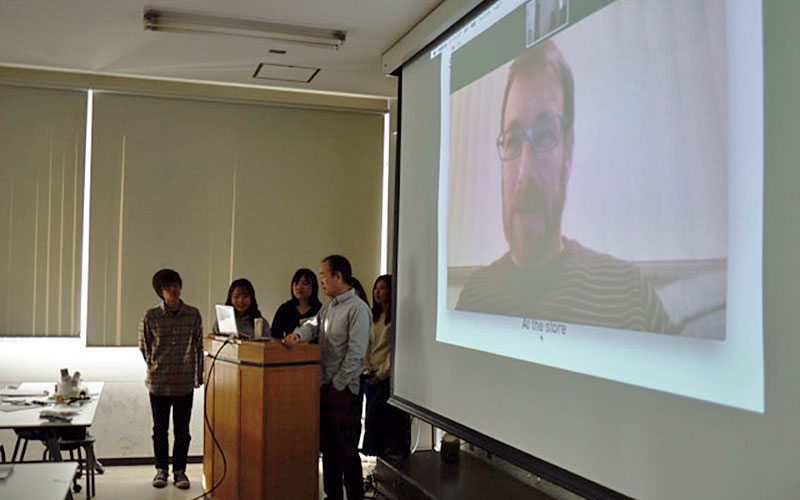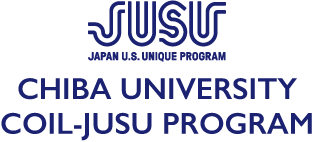Integrated Packaging Design Studio
実施大学(学部)
Partner university (faculty)
千葉大学工学部 シンシナティ大学
Faculty of Engineering, Chiba University and University of Cincinnati
授業日程
Class schedule
千葉大学工学部
Faculty of Engineering, Chiba University
12月9日~2月3日
December 9 to February 3
シンシナティ大学
University of Cincinnati
8月26日~12月8日
August 26 to December 8
時差
Time difference
14時間
14 hours
授業目的
Class objectives
この授業では、パッケージデザインにおける歴史的目標と現代的目標の両方を取り上げ、コンセプトから実際の生産を考慮したプロトタイプまで、ユーザーを中心とした革新的なパッケージデザインを作成するための一連の新しい方法論、技術、戦略を検証する。 製造可能性とエコロジカル、ユニバーサルな視点を持ちながら、ユーザーの体験の質と価値を高めるために、パッケージデザインの知覚的、文化的、および実用的な考慮事項を調査して統合する。この包括的な方法論は既存の標準的なパッケージデザインに影響を与え、より価値があり、便利で、楽しいパッケージデザインを開発する可能性がある。
This class addressed the historical and modern goals of package design and examined new methodologies, techniques, and strategies for creating user-focused, innovative package designs from concepts and prototypes with the focus on actual production. The students researched and integrated sensory, cultural, and practical issues to enhance user experience, quality, and value, with ecological and universal perspectives and attention to production possibilities. This comprehensive methodology has the potential to influence existing standards, allowing for the development of more valuable, convenient, and enjoyable package designs.
授業内容
Class content
まず始めに、シンシナティ大学で行われている授業をピーター先生からプレゼンテーションをしていただき、それを基に千葉大学でデザインのグループワークを行った。最終プレゼンで再びピーター先生に参加して頂き、講評を一緒に行った。授業の流れは以下の通りである。
- 授業の概要およびシンシナティ大学の授業の説明
- 調査・分析
- 問題点の洗い出し
- スケッチ・アイデア出し
- デザイン目標の設定
- 中間プレゼンテーション
- プロトタイプ作成
- 最終プレゼンテーション
At the start, Professor Peter Chamberlain gave a presentation on classes at the UC, providing the basis for the group work at Chiba University. He rejoined the class as an evaluator during the final presentations. The class content was as follows.
- Explanation of class overview and classes at UC
- Research and analysis
- Extraction of issues
- Sketching and idea brainstorming
- Setting design goals
- Mid-term presentations
- Prototype creation
- Final presentations
授業実施形態
Class format
同期型
Synchronous
使用ツール
Tools used
Zoom
今まで行っていた授業「平面デザイン造形」では、グラフィックや形に重点が置かれていたのに対して、シンシナティ大学で行われている授業は、企業から求められている人材を創出することを目標としており、非常に実務的であると同時に社会の有り様をより良い方向に導きうる創造性がある。その視点に触れて実践することは日本の学生にとって世界的な視野を獲得する契機になりうる。また、双方の大学で同内容の授業を行うことで、学生達は文化や社会システムの違いによって求められるデザインが大きく異なるということを、身をもって知ることができる。このことは、グローバル化した現代において、双方の学生にとって非常に有意義である。
日本パッケージデザイン協会理事長であり、著名なパッケージデザイナーでもある伊藤透先生を非常勤講師としてお招きし、学生指導および講評などをやっていただいた。そのことで、実際のデザイン現場の状況や世界的な潮流なども踏まえた、職業に結びつく専門性のある教育(Professional Study)を提供できたと考えている。
While previous "plane design forming" classes focused on graphics and form, the classes at the UC are intended to create the human resources needed by the corporate world. These have to be highly oriented toward practical work and equipped with the creative ability to change society for the better. Practice, in this instance, provides Japanese students an opportunity to gain a global perspective. In addition, holding classes with the same content at both universities brings home to the students the differences in design called for by the different cultural and social systems. Amid the globalization of today, this is extremely significant for students from both universities.
Student guidance and evaluation were provided by Toru Ito, the famous package designer and president of the Japan Package Design Association, who was invited to serve as an adjunct instructor. This enabled the class to provide career-related professional study based on the actual package design industry and global trends.


